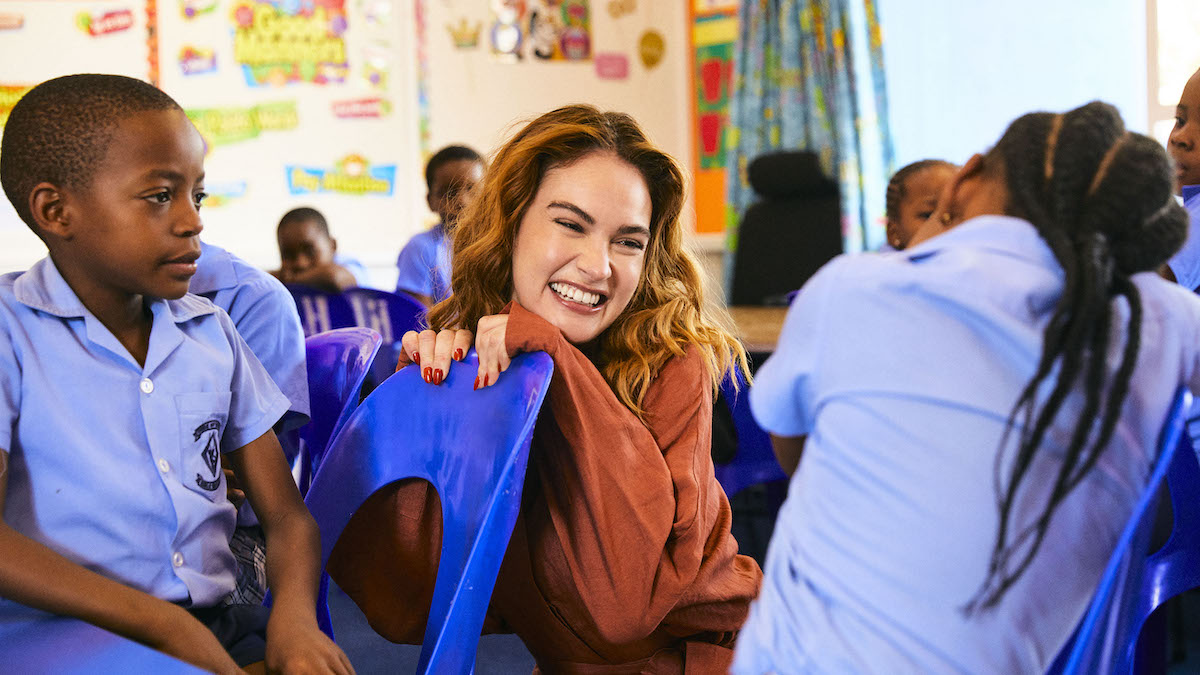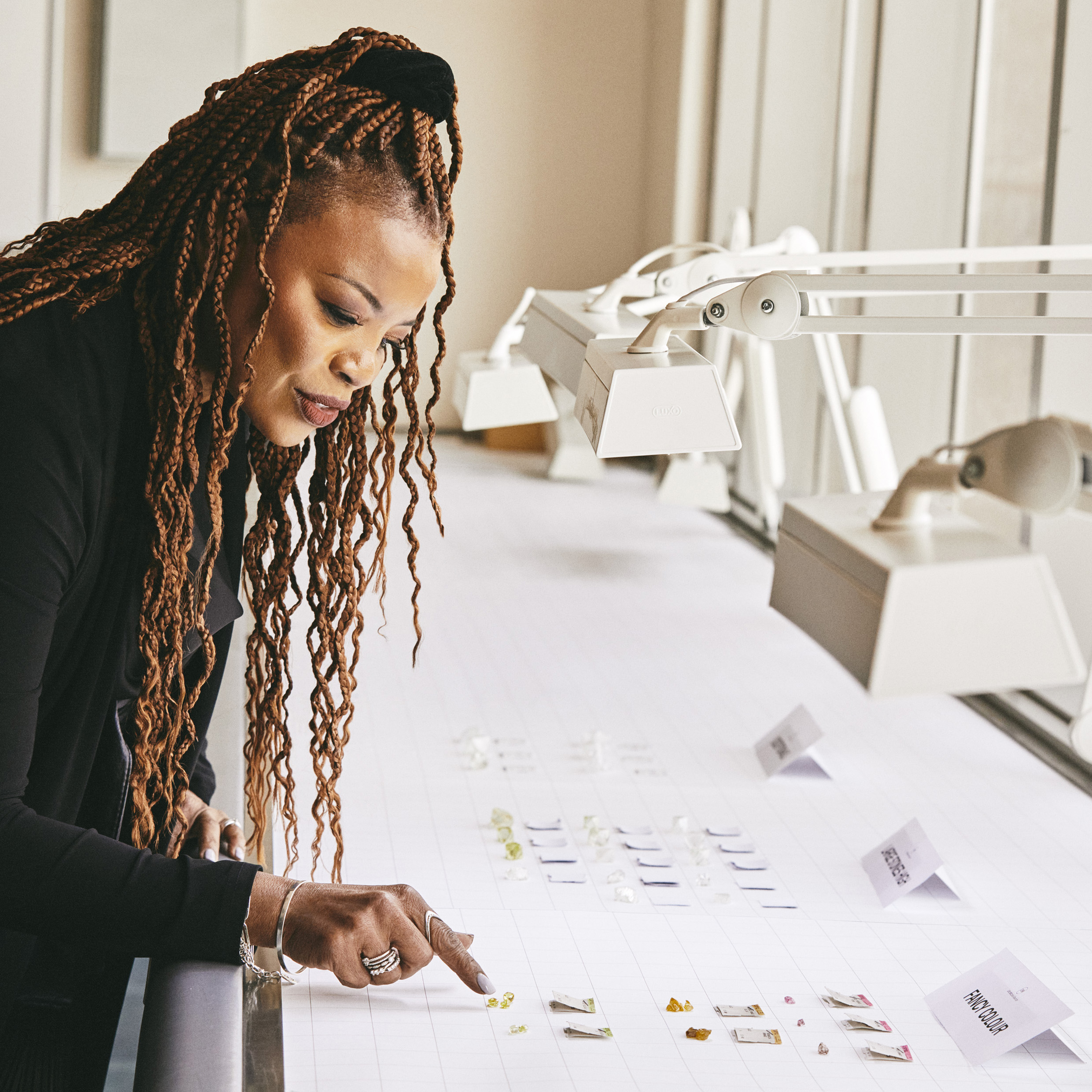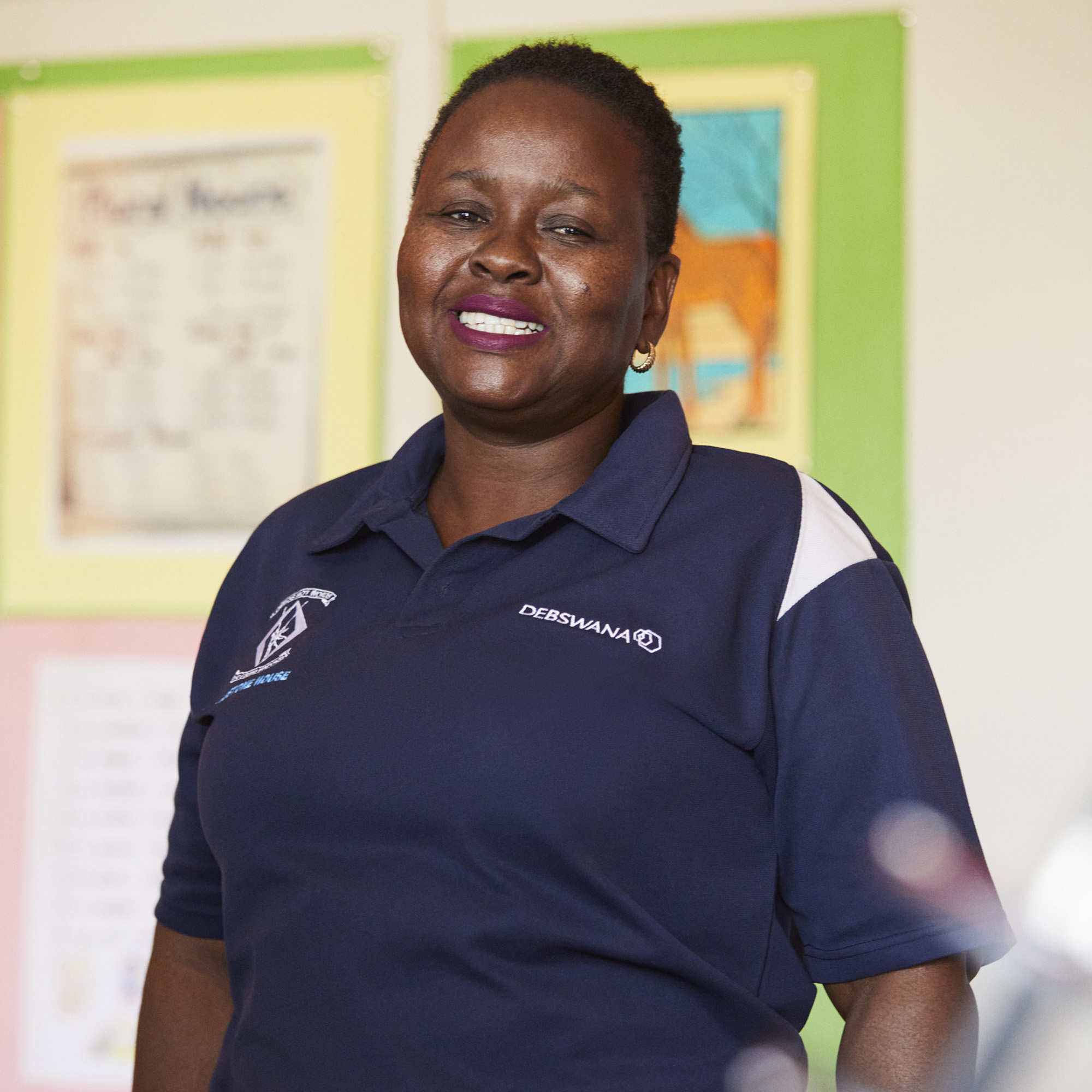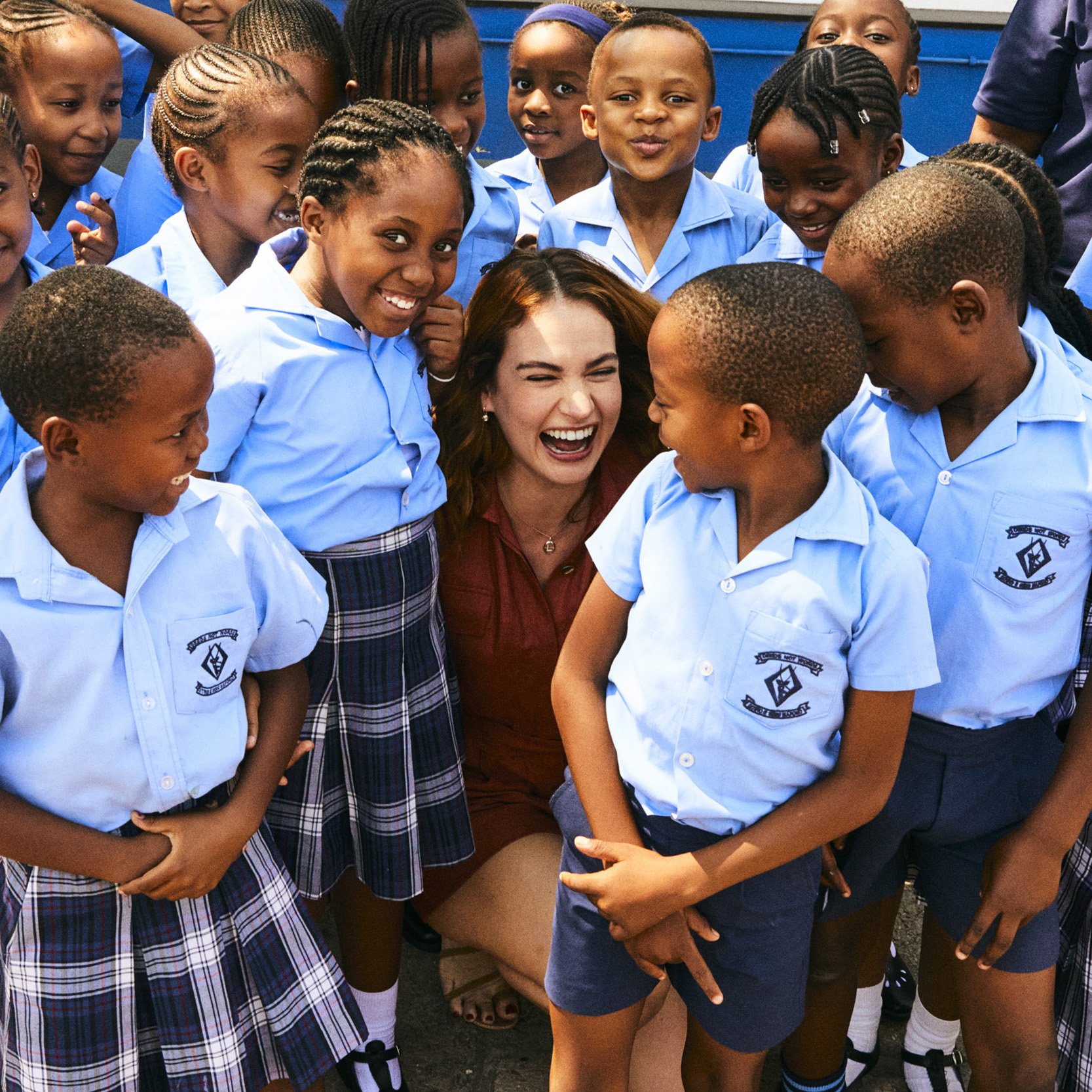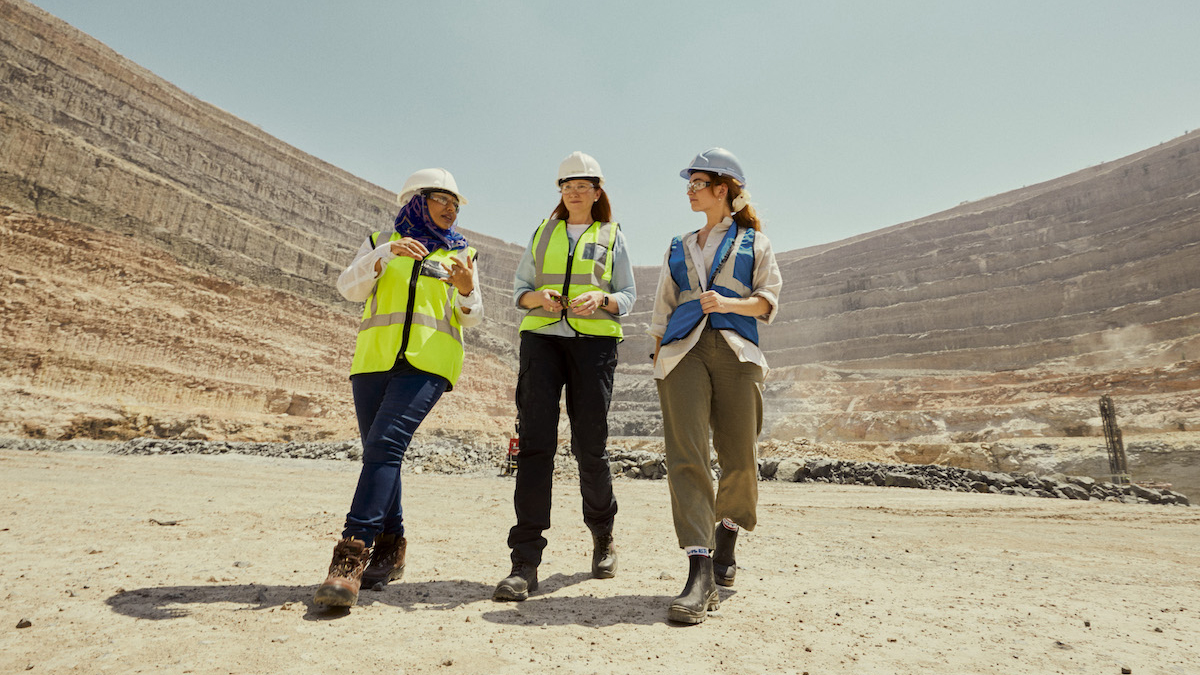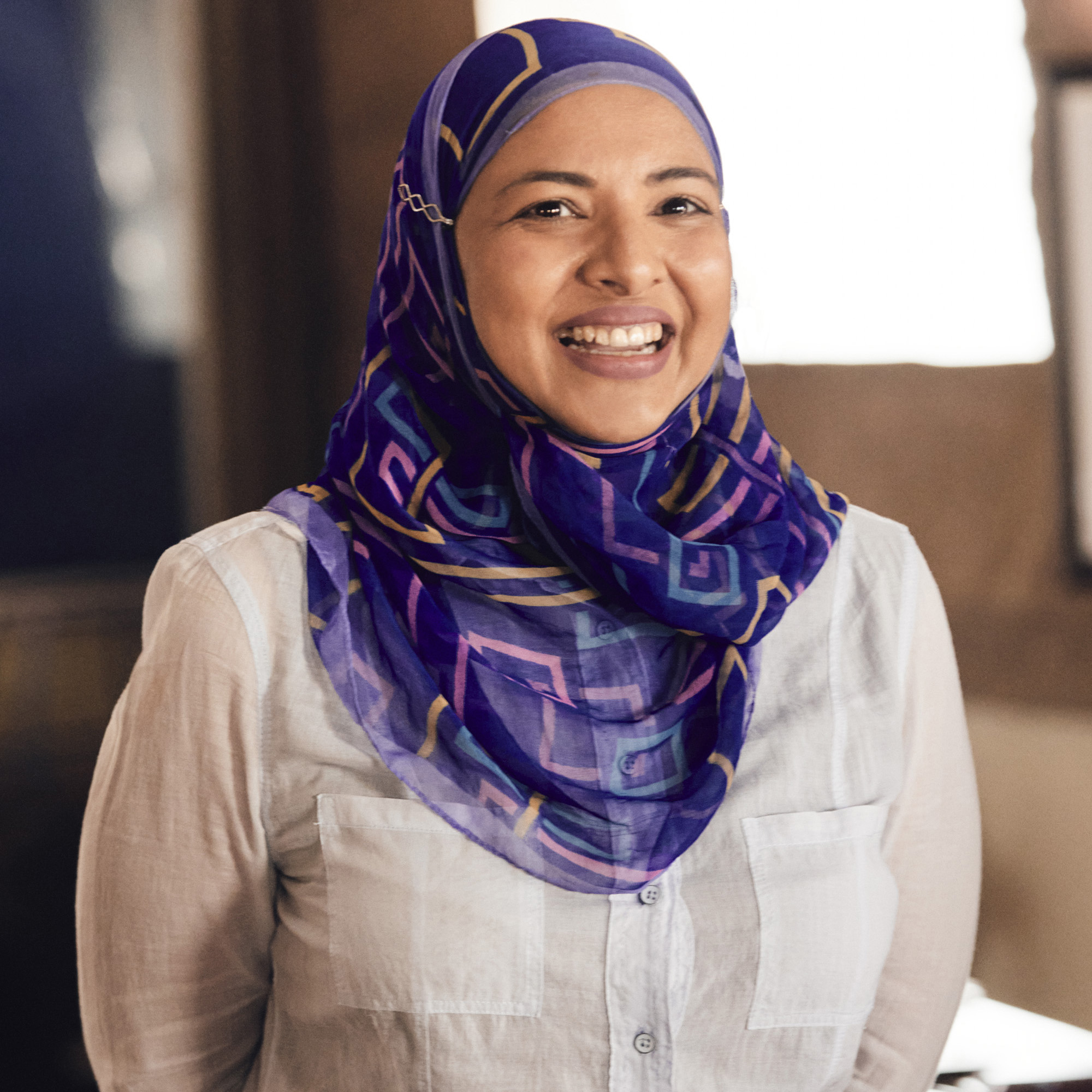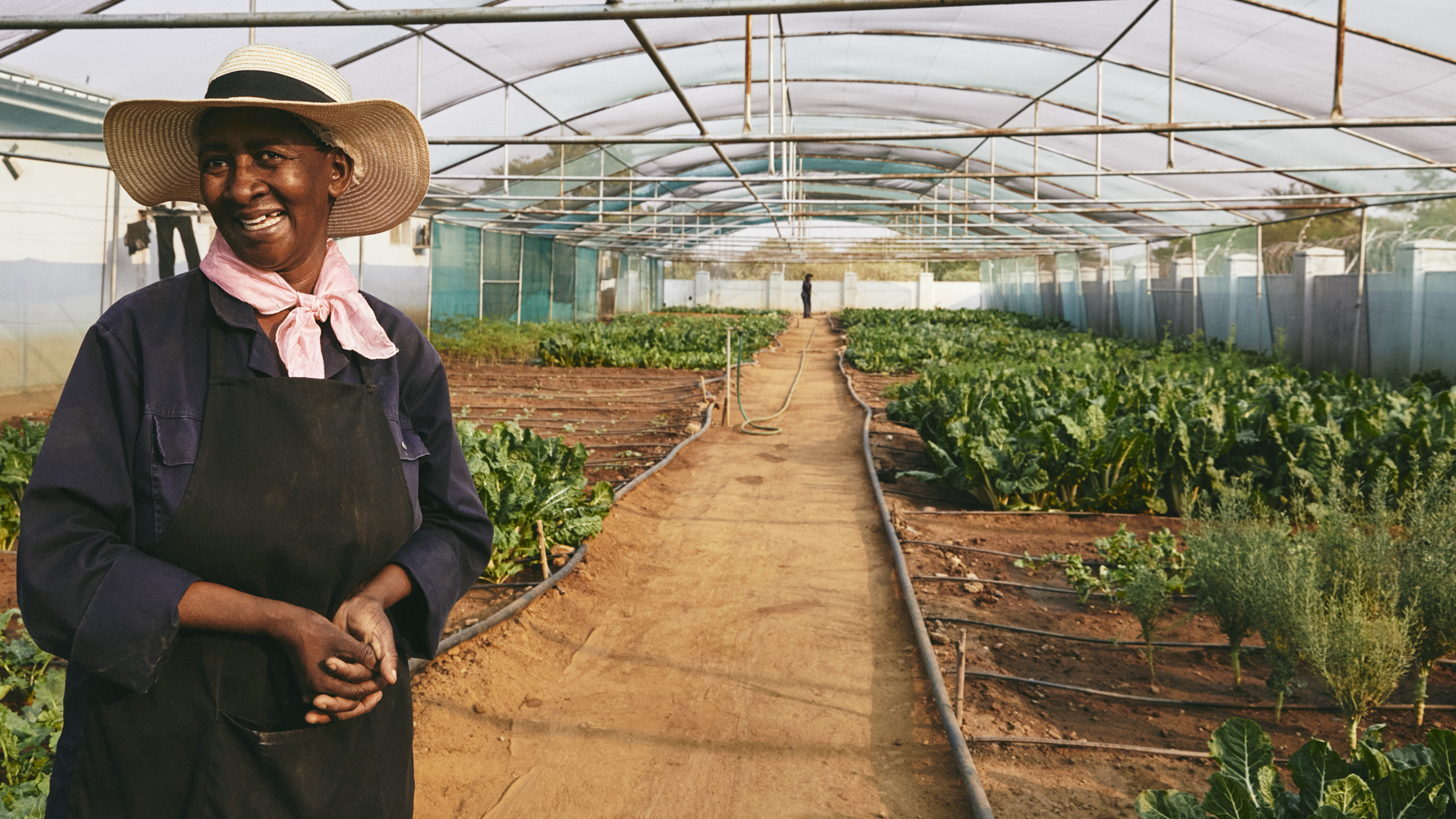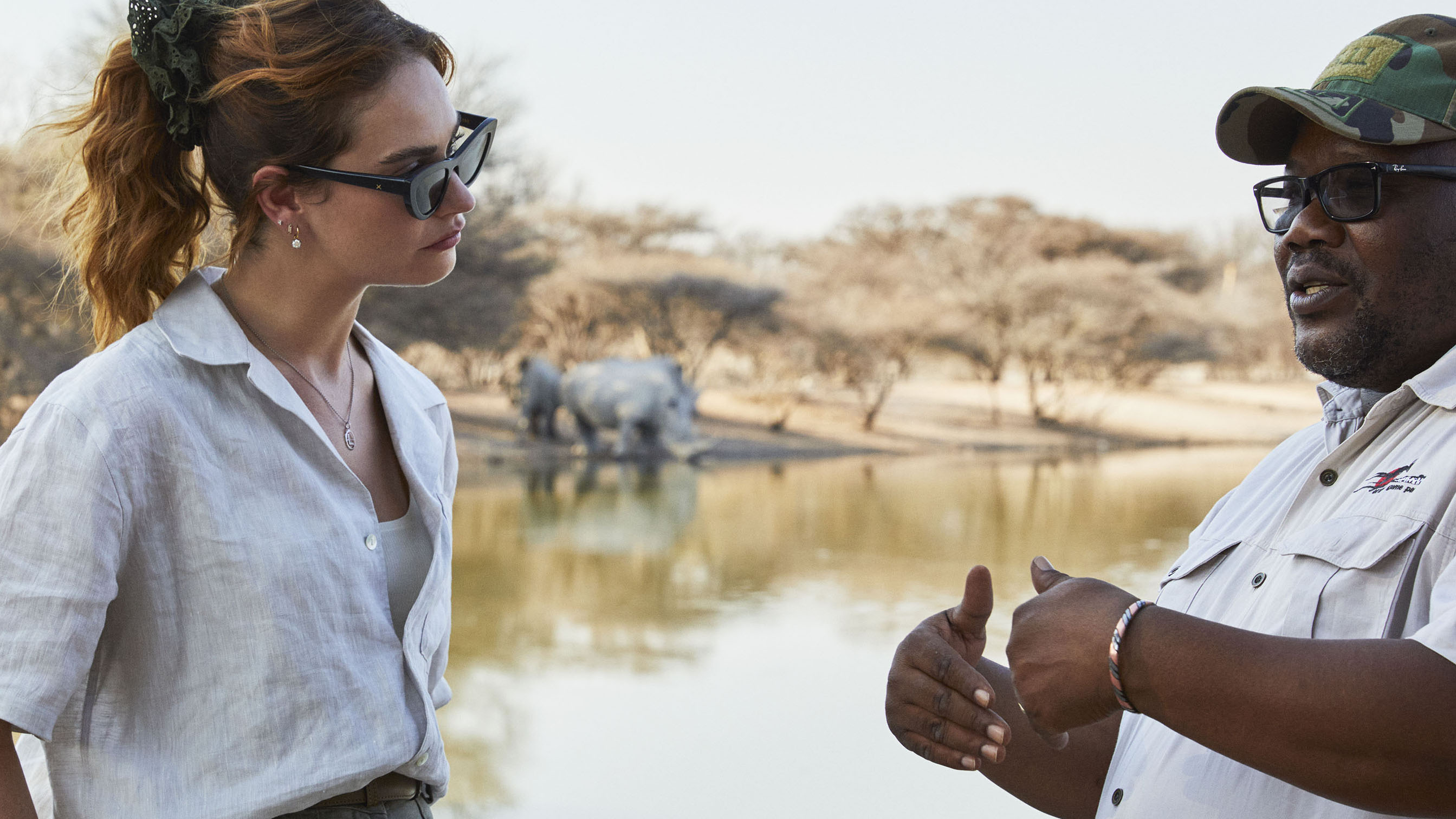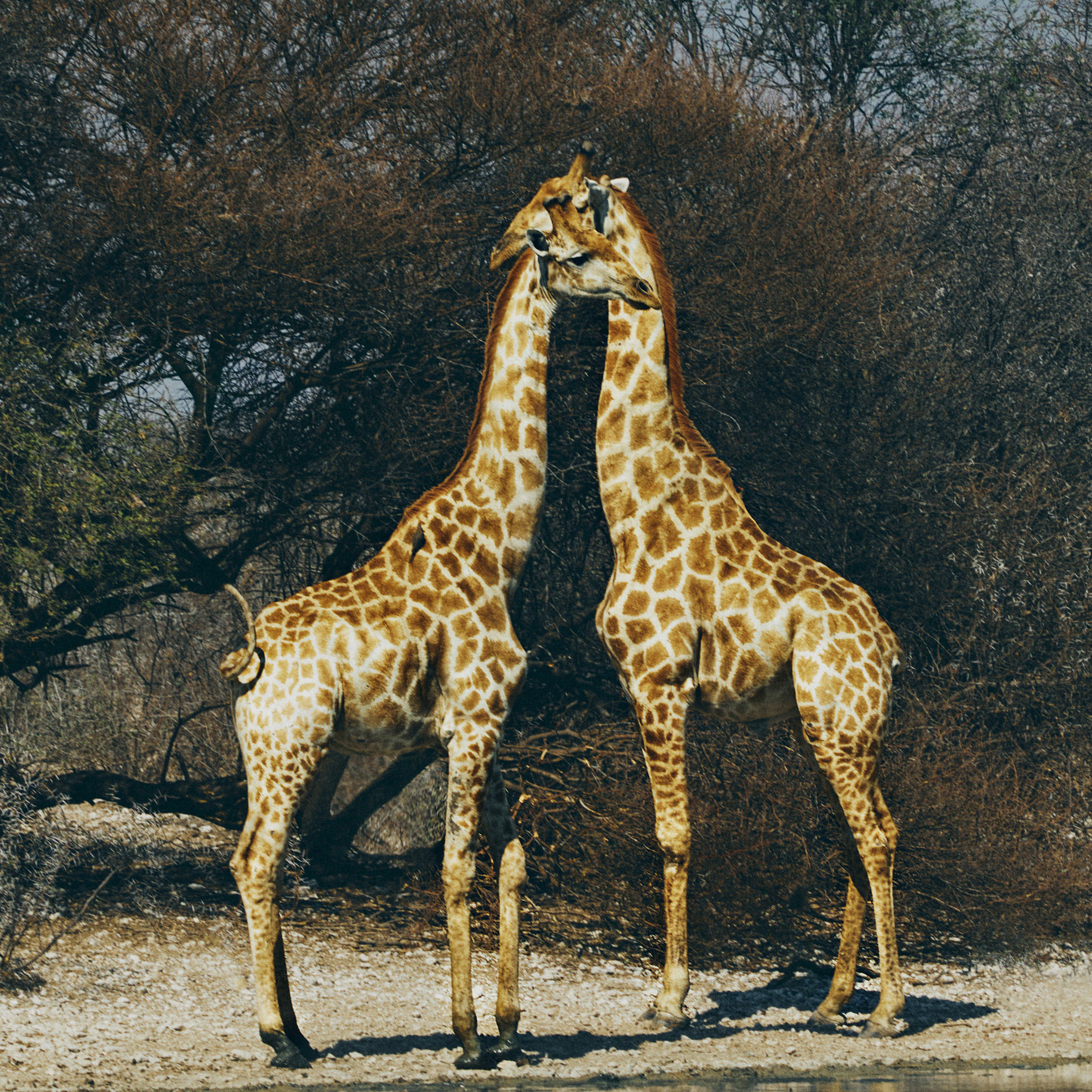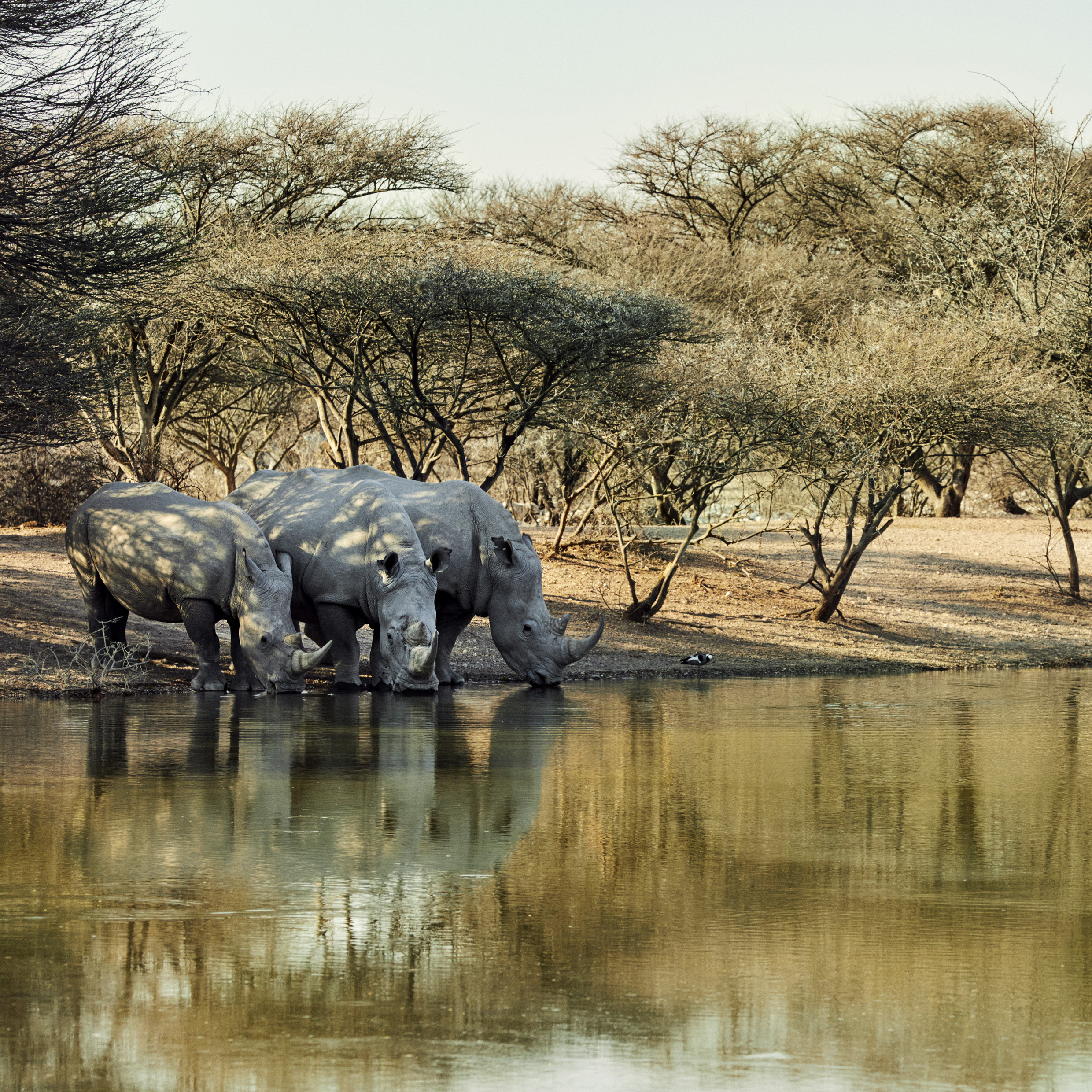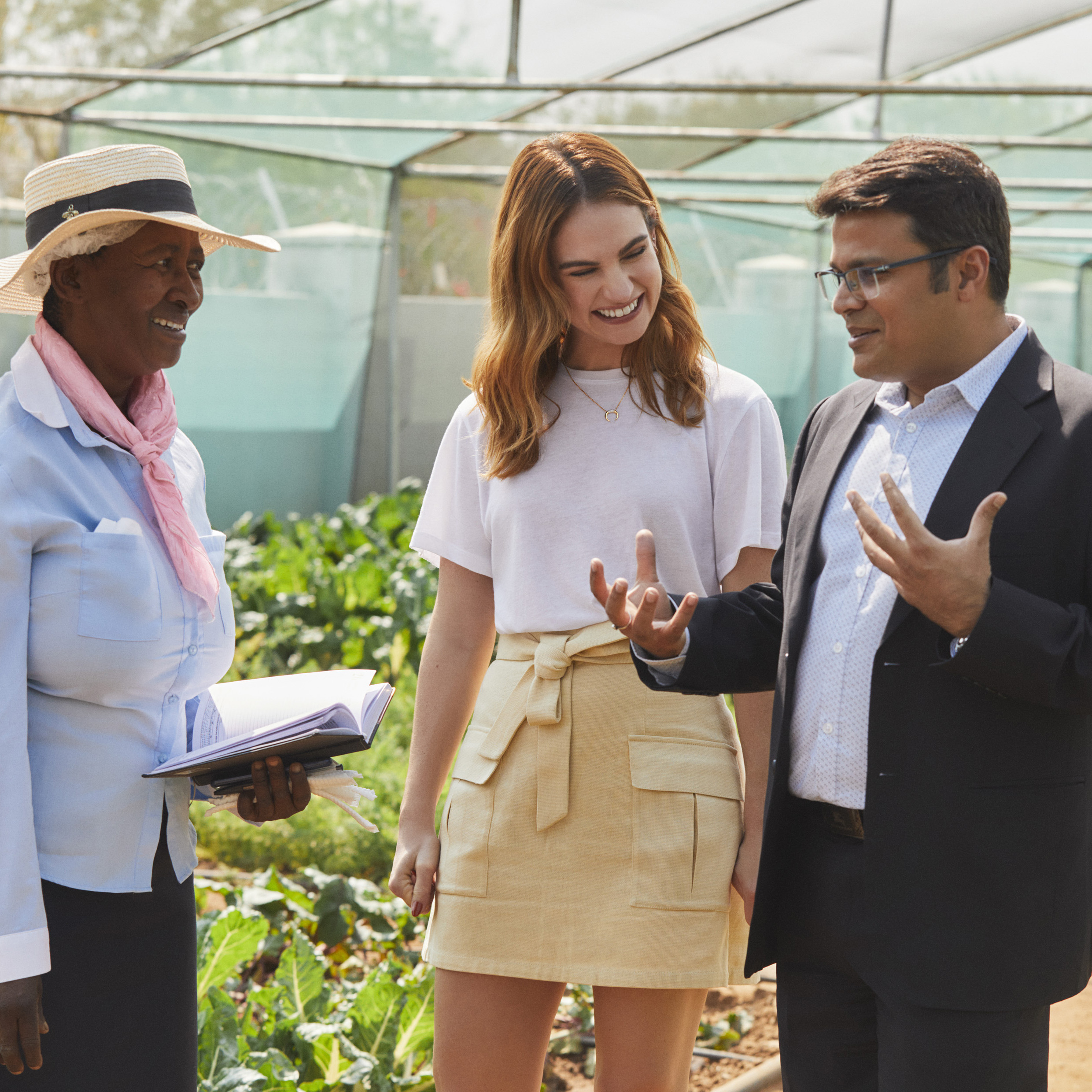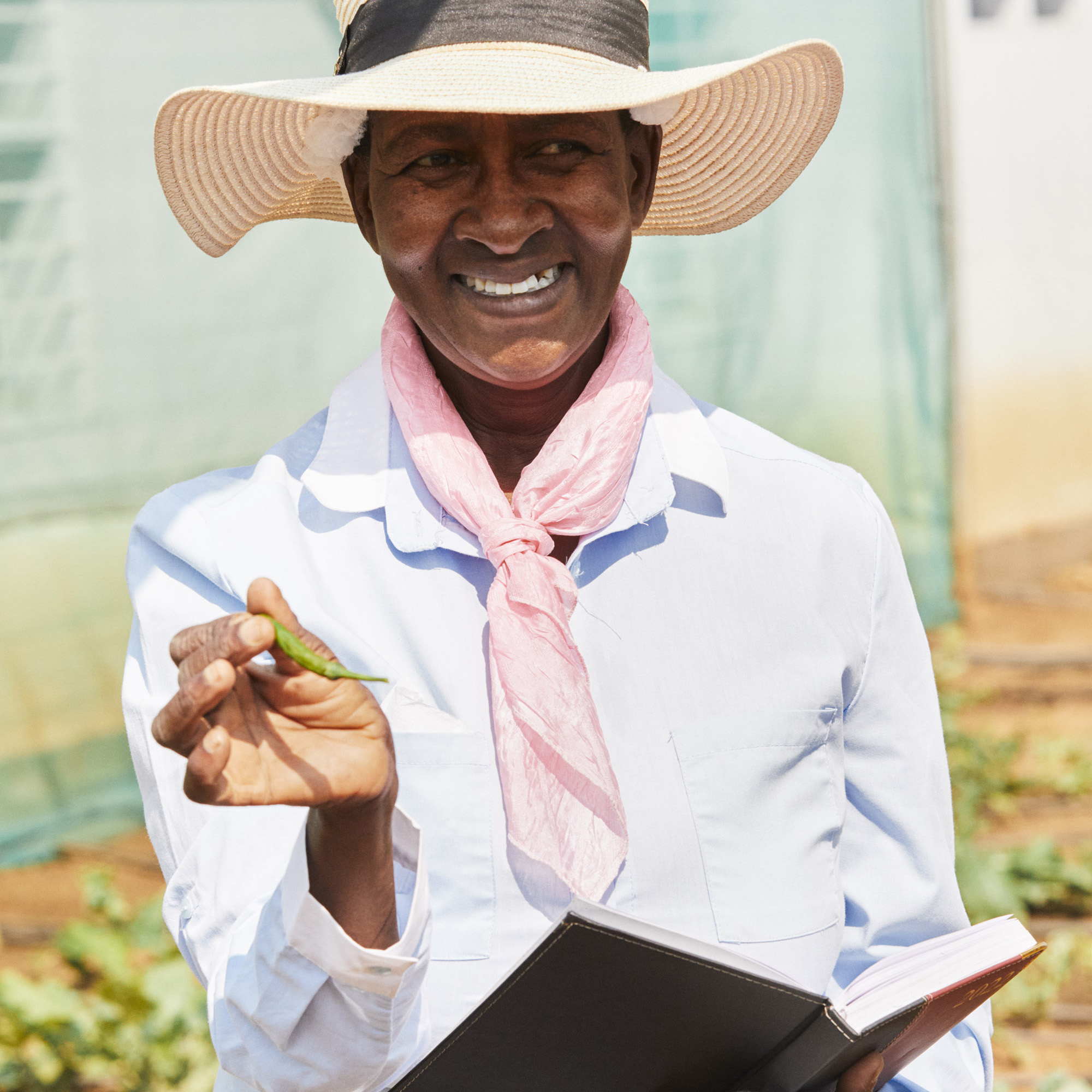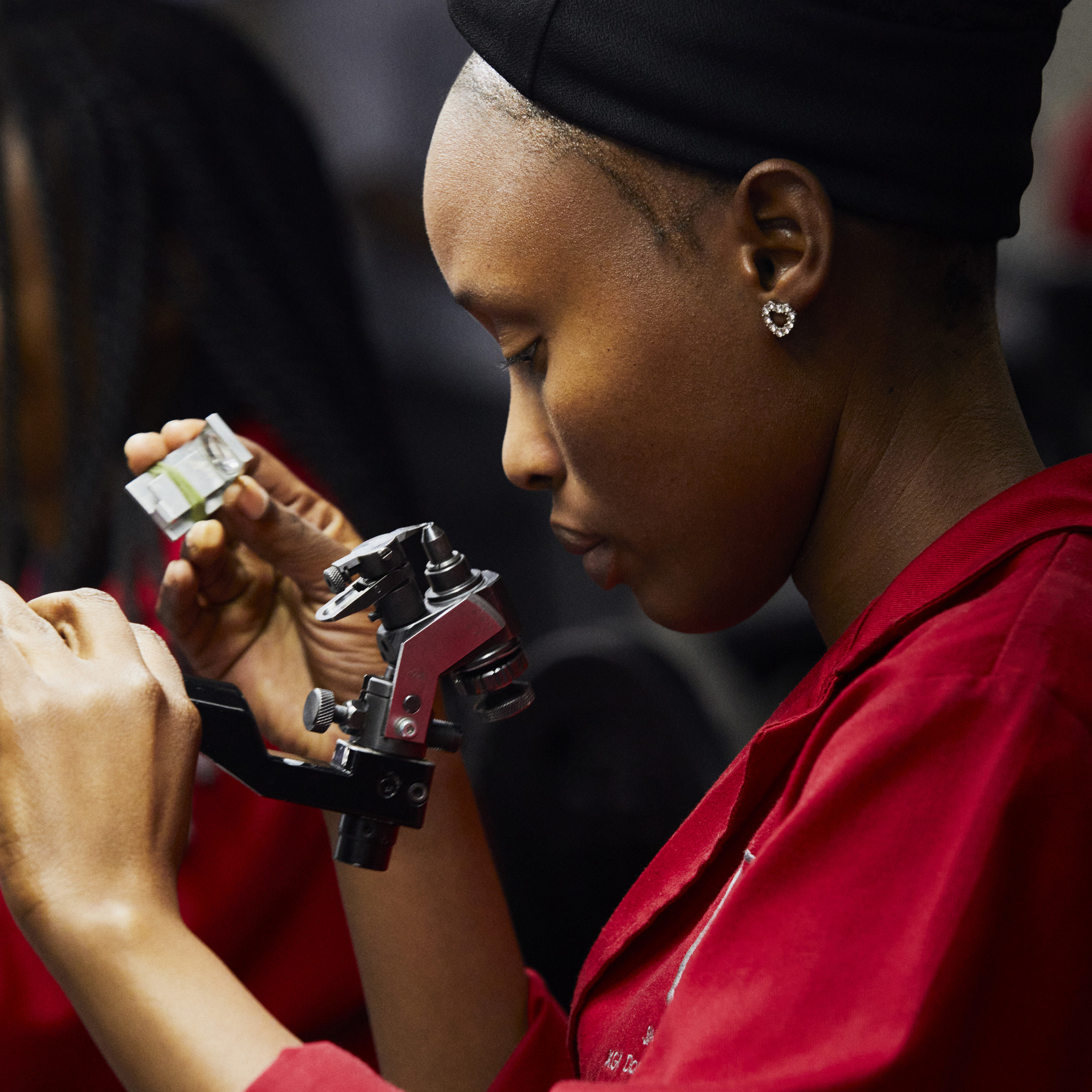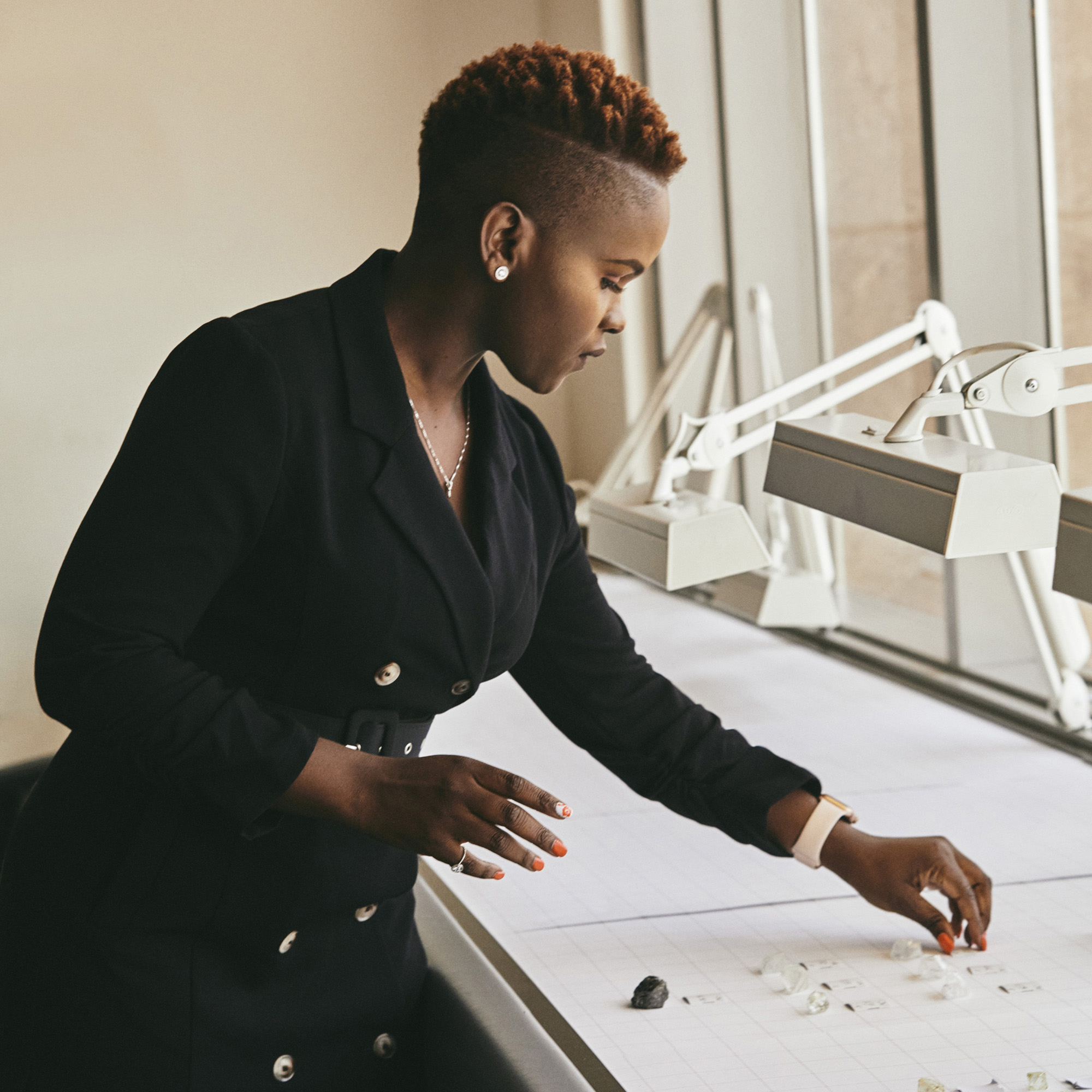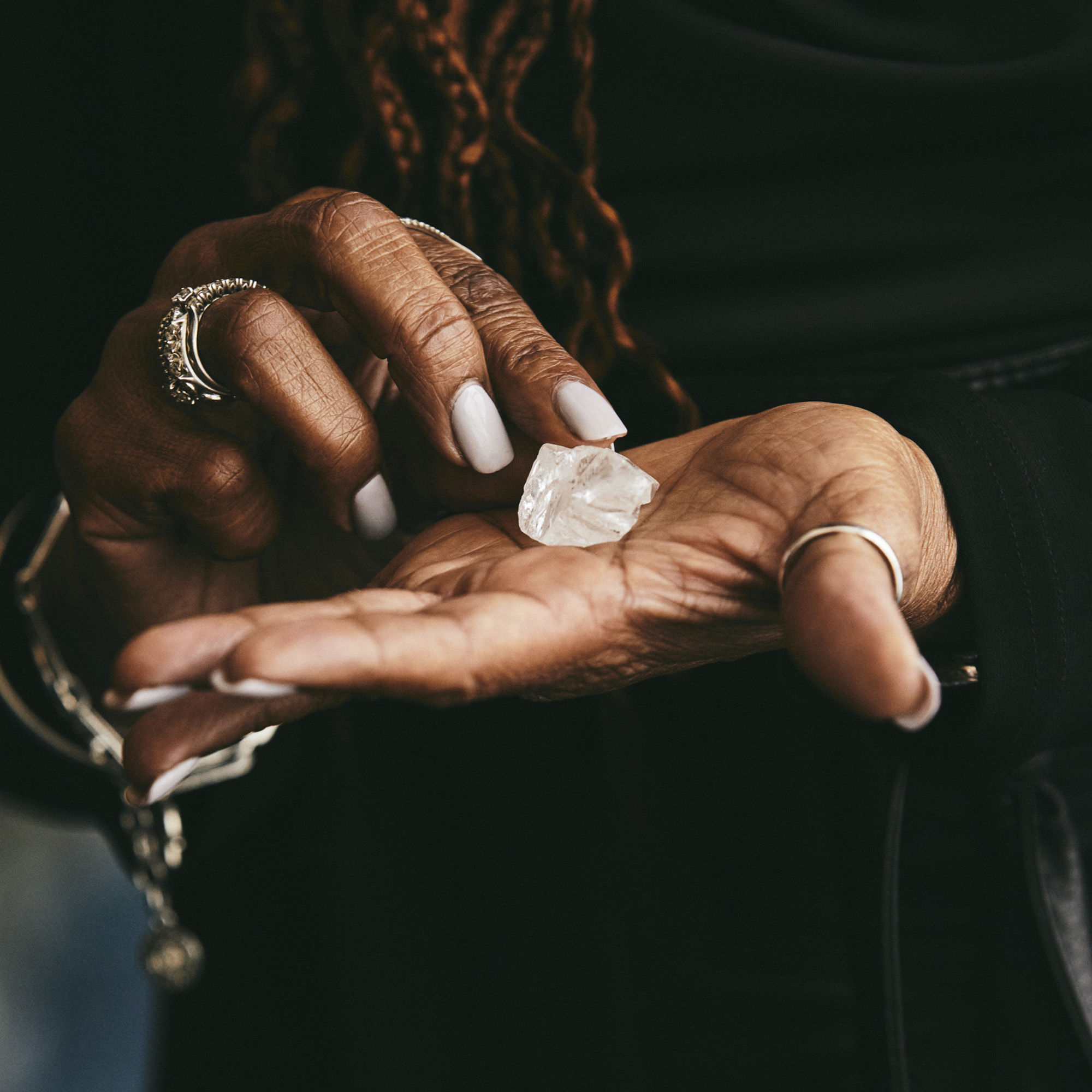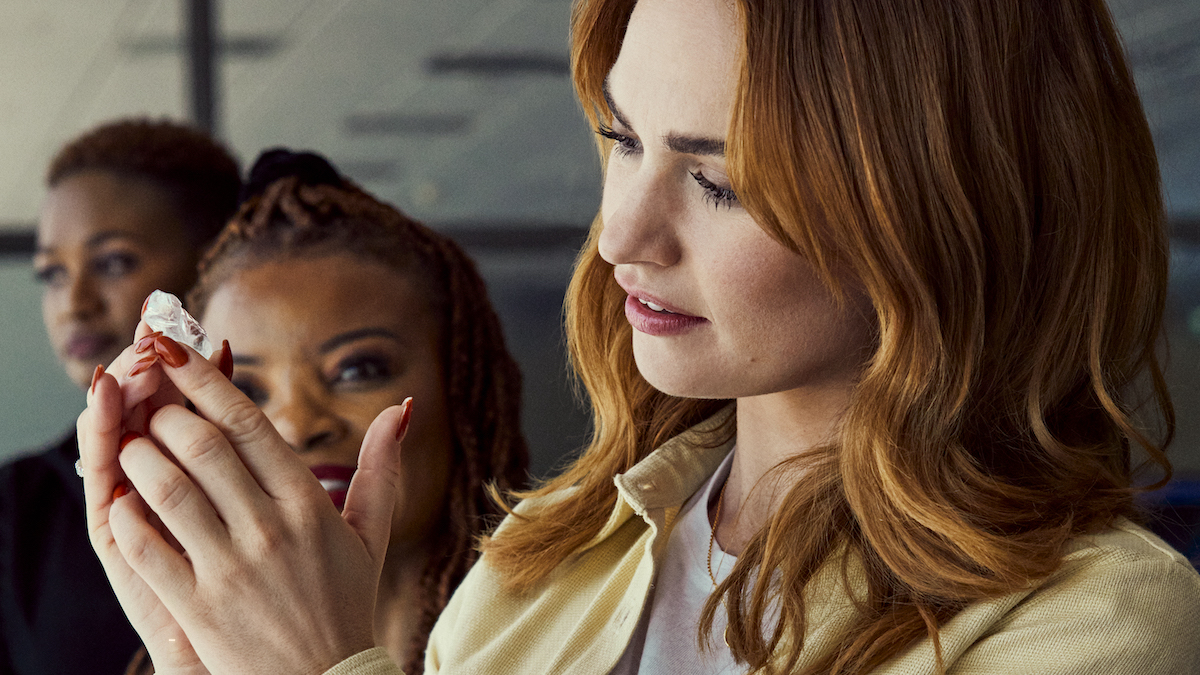Think You Know Diamonds?
Meet Lily James in Botswana
Following the Journey of Natural Diamonds was Life-Changing
for NDC’s Global Ambassador Lily James.
By Jessica Iredale
By 1:30 pm on a Monday afternoon in Orapa, Botswana, a mining town over 300 miles from the country’s capital Gaborone, the classrooms at the Livingstone House Primary School had emptied for the day. Except for one. The students in third grade had stayed late, not as a punishment but a reward.
“Who are we going to see?” Emily Mompe, the class’s teacher, asked the room of 8 and 9-year-olds. “Lily James!” they answered in unison.
The children were high on the anticipation of meeting James, the English actress who is known for her roles in Pam & Tommy, Mamma Mia! Here We Go Again, Rebecca, Baby Driver, Downton Abbey and the highly anticipated Iron Claw. The kids knew her as Cinderella from her part as the title character in the 2015 Disney film version of the classic fairy tale. When she arrived, the students’ reaction progressed from shy shock and awe to emboldened engagement and curiosity, as they plied her with questions: How did you become an actress? Where do you live? “Can I have your phone number?” as one boy inquired.
“Would it be weird for a 33-year-old woman to give an 8-year-old her number?” James said, mostly joking, later in the day.
The meet-and-greet was of mutual benefit. The kids got to meet a Disney princess in the flesh; James got to see the heartwarming fruit of Botswana’s booming diamond industry, of which she is now the global face in her new role as ambassador of the Natural Diamond Council.
The Livingstone House Primary School, an elementary school with a student body of 600, ages 6 to 13, is a direct result of the economic development driven by natural diamonds. Specifically, the school is one of four in Orapa funded by the world’s leading producer of diamonds Debswana, a 50/50 joint venture between De Beers and the government of Botswana, which provides free primary and secondary school education to every Botswanan child.
James was in Botswana to get an education herself. When she signed on to be the Natural Diamond Council’s ambassador, it was not to play a character. Part of the deal was seeing exactly what she was representing. On the ground research was required. Her trip included visits to almost every part of the local diamond value chain — the Karowe Mine, De Beers Global Sales, KGK Diamonds cutting and polishing unit — as well as witnessing the reverberative effects on the surrounding communities and wildlife, via a school or the Orapa Game Park.
“You want to make sure when you’re putting your name to something, that there’s more to the story,” said James, who had done her due diligence on Botswana’s history with diamonds as best she could without witnessing it first-hand. Prior to working with the NDC, her passing knowledge of the country came from a good friend from boarding school in England who had grown up there. “She was always talking about Botswana. She had initially wanted to be a conservationist and studied geology at university, so that all comes from here,” said James.
“Part of all of this is about breaking down any stigma and really telling the true diamond story,” said James. “Particularly with regards to Botswana, the ethical side of it was a massive draw. It would be something I would be able to talk about because I would care rather than just being like, ‘Oh, a luxury good.’ Being here is seeing the value and the human aspect of it. It feels so genuine and real and powerful.”
“Part of all of this is about breaking down any stigma and really telling the true diamond story.”
Visiting the Livingstone House Primary School was one stop on an intense three-day trip to Botswana during which James was indoctrinated into the country’s unique relationship with natural diamond mining, which at 33 percent is the largest contributor to the country’s GDP. Botswana was a British Protectorate from 1895 to 1966 when it declared its independence. Diamonds were discovered the following year and the mineral is owned by the country per the prescience of the country’s first president Sir Seretse Goitsebeng Maphiri Khama, who decreed that any diamond found in Botswana belonged to the people rather than the individual. Any diamond-related industry is conducted via a licensing agreement with the government, which puts more than 80 percent of diamond revenues back into the country’s economy. That governance has allowed for the development of a large middle class in Botswana, as well as investment in critical infrastructure, such as hospitals, roads and schools.
“Without diamonds, we wouldn’t have a country,” said Pat Dambe, Vice President of Market Outreach at De Beers Group, noting that at the time of Botswana’s independence it was the third poorest country on the African continent. “We practice, as a result of our culture, that we’re all together. In unity, there’s strength. The average person you speak to here has a good education, thinks about their children going to school, has a house.”
As the main industry in Botswana, the country produces the most diamonds in all of Africa.
“Without diamonds, we wouldn’t have a country.”
Emily Mompe attended the Livingstone House school years before she became a teacher there. “When I think of Orapa in the 80s versus what we have currently, it’s one of those things that you need to live here to believe it,” she said of the development in the area. “We used to have bumpy roads and now, of course, paved roads. We used to have a clinic the size of a three-bedroom house and now it is a hospital. We had no secondary school in my day, now we have two junior secondary schools and a senior secondary school.” Mompe’s classroom has a smart board that was essential for remote learning during Covid. Swimming is an essential part of the curriculum and there are three pools among the local schools, all heated during the winter so that the kids can still swim when the temperature drops.
“We are not just concerned with academics,” said Mompe. “We want to provide for the whole child.”
Many of the students’ parents are employed by the natural diamond industry yet the students themselves are raised to envision life beyond diamonds. “I asked them all what they wanted to be when they grow up and the answers were presidents, vets, doctors, rappers,” said James. “They were so bright and so ambitious.”
Such progress is directly connected to the economic impact of the natural diamond industry at large, but also locally. Orapa is home to two active diamond mines — the Orapa mine, owned by De Beers, and the Karowe mine, owned by Lucara, which James visited a few hours before going to the school. On a purely superficial level, the Karowe mine is a sight to behold to those unused to seeing a mine up close. The open pit descends to a depth of 324 meters and is traced in graphic, linear paths that carry trucks to the mine’s lowest point. It brings to mind something out of Star Wars.
Relative to other mines, Karowe is small, yet in the 10 years that Lucara has been operating it, the mine has yielded an inordinate number of large, high-value Type IIA diamonds. “We are the only mine in world history to recover three diamonds in excess of 1,000 carats in size,” said Lucara’s ceo Eira Thomas, presenting some of Karowe’s key stats to Ms. James. Some of Karowe’s most high-profile, record-setting stones including the historic 1,758 carat Sewelô, which was purchased by Louis Vuitton; the 1,109 carat Lesedi La Rona, which was purchased by Laurence Graff, and the 813 carat Constellation, which sold for a record $63 million.
It would be impossible not to be impressed by diamonds of such size, but what James found equally if not more inspiring was the people behind Karowe’s operation. “The first thing that hit me was Eira, whose story is incredible in itself,” said James.
Thomas, a Canadian geologist by training, is the one who bet big on Karowe. Lucara purchased Karowe in 2010 and began unearthing its bounty of enormous stones. Mines have a lifespan and originally Karowe’s was estimated to run through 2026. During her presentation to James, Thomas noted that Lucara had secured $550 million to expand the mine a further 800 meters underground, extending its life to at least 2040. That means more jobs, more growth, more progress and stability in Orapa.
In addition to these remarkable stats, Thomas, a female CEO in the world of mining, said that 31 percent of Karowe’s workforce is female and 75 percent of its executive committee is female. That includes Naseem Lahri, the first female managing director of a diamond mine in Botswana, and the youngest female MD in mining in the world. Lahri oversees Karowe’s operations from the ground up — and down — but also how it impacts the surrounding community.
Karowe supports 18 villages, reinvesting in their economies and communities via healthcare, education, agriculture and Gender Based Violence initiatives. For the most part, Orapa relies on food imported from South Africa. When Covid restrictions closed borders, the local villages had to rely on their own agricultural cull. The poorest of the 18 villages developed its own vegetable and chicken farm, growing, thriving, generating food, jobs and income to the point that it’s no longer the poorest village. The farm is run by a woman and 90 percent of her staff are women.
“Naseem told me that they were tracking the schools in these villages and there was a gap where the girls weren’t going to school,” said James. “They found out they didn’t have access to sanitary towels so they weren’t able to go to school. Now, Karowe is providing that for free. It’s such a simple thing but the impact is huge.”
Lahri said Karowe has a record number of females in its workforce for a reason. “They’re seeing females in the forefront and more women are actually coming to apply for jobs here because they know it can happen,” she said.
The holistic relationship between Botswana’s natural diamond industry and its people and land is evident at every point of James’ tour of the country. Adjacent to Orapa’s tiny airport is the Orapa Game Park, one of eight conservation sites funded by De Beers Group around Southern Africa. Just before sunset on the day she arrived James took a tour along a select route of the park’s nearly 50,000 hectares to see the wildlife reserve’s protected black and white rhinos, zebras, giraffes and impalas. She got an education on the animals and awesome scenery as well as Debswana’s mission of conservation. “For every acre of land mined, they set aside six for the protection of the animals,” said James.
James’ trip follows the route of the “rough” mined in Orapa to the city of Gaborone, where much of raw material ends up in the hands of diamond cutters, such as the employees of KGK Diamonds, the largest diamond cutting and polishing facility in the city. Run by Siddarth Gothi, KGK has circularity and sustainability built into its entire operation in Gaborone. There’s an on-site creche to care for the employees’ children, a vegetable garden used to make company meals, and the building is outfitted with solar panels and water-recycling technology.
Many of the employees are young locals, who enter a training program that often leads to full-time employment. KGK prioritizes disadvantaged young adults, many of whom are disabled or lack access to advanced education. Armstrong Gabanamotse is a 23-year-old polisher who started with the company in 2019, learning how to scan and polish stones to take them from rough to brilliant cuts with as little waste and breakage as possible. Now he operates KGK’s most technologically advanced machine, the Optimus, to yield fancy cuts — pear, heart-shaped, oval, marquis, emerald. He says he’s proud to work at KGK because diamonds gave Botswana an identity. “From rough to the final product, when you look at it, it gives you a smile,” Kamanan said. “I’ve made something shine.”
One of the final stops on James’ trip is the De Beers Global Sightholder Sales, where rough diamonds from all over the world are sorted and sold. More than 32 million carats in diamonds passed through the building in 2021. Security is understandably tight. All guests are scanned and monitored through multiple checkpoints as the enter and exit the building. Allowing outsiders, especially an ambassador like James, to witness the diamond value chain is worth the security risk in the eyes of Susanne Swaniker, De Beers Global Sightholder’s CFO. “Sometimes people think we have the ‘mineral curse,’ but we have positive stories,” she said. “It’s important for somebody from outside Botswana to understand how an individual on the street can actually have medical care, schooling, basic housing, water, electricity in their house because of these revenues.”
Inside, dozens of specialists value and sort the rough stones, group and pricing them for customers. A young diamond valuator Lydia Tendy leads James through the sorting room, placing exceptional stones of up to 100 carats in her hands. In many ways, this is the moment that crystalizes everything for James.
“You really feel the power,” she said. “This is Mother Nature. These stones were created billions of years ago, lifted up to the earth’s surface via volcanoes. They really do feel quite miraculous. To be in Botswana and see the effect the stones have on the community, the value of them has only grown in my eyes.”
Photographer: Molly SJ Lowe
Video: Carbone Productions
